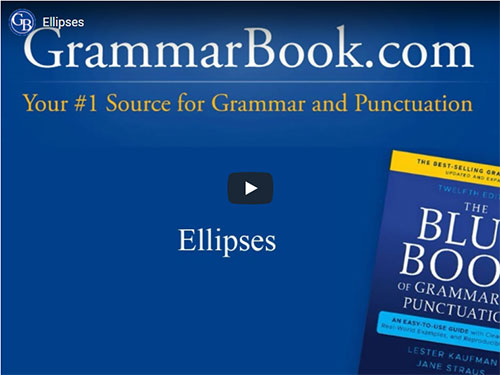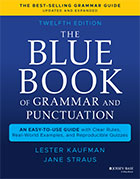|
The last couple of years have seen a greater emphasis on how we refer to and write about cultural identity in a wonderfully diverse country such as the U.S. In this discussion, we'll share some current style guidance you can consider.
When we seek reinforcement for certain style items at GrammarBook.com, we most often refer to The Associated Press Stylebook and The Chicago Manual of Style. For questions of cultural identity, we lean even more toward AP's lead, as their style applies to daily communications such as newspapers, magazines, and social media.
Concerning writing about identity, we also agree with AP's observation this year that:
"reporting and writing about issues involving race calls for thoughtful consideration, precise language, and discussions with others of diverse backgrounds whenever possible about how to frame coverage or what language is most appropriate, accurate and fair.
"Avoid broad generalizations and labels; race and ethnicity are one part of a person's identity. Identifying people by race and reporting on actions that have to do with race often go beyond simple style questions, challenging journalists to think broadly about racial issues before having to make decisions on specific situations and stories.
"In all coverage … strive to accurately represent the world, or a particular community, and its diversity through the people you quote and depict in all formats. Omissions and lack of inclusion can render people invisible. Be aware that some words and phrases that seem innocuous to one group can carry negative connotations. … As with all news coverage, be sensitive to your varied audiences and their different perceptions of language and the larger world." |
With that in mind, here is how AP currently treats references to cultural identity:
American Indians, Native Americans When referring to two or more people of different tribal affiliations in the U.S., both can be acceptable terms (no hyphen). For individuals, use the name of the tribe; if that information is not immediately available, try to obtain it. He is a Navajo commissioner. She is a member of the Nisqually Indian Tribe. Avoid words such as wampum, warpath, powwow, teepee, brave, and squaw.
In Alaska, the Indigenous groups are collectively known as Alaska Natives.
Asian American This term (no hyphen) is acceptable for an American of Asian descent. When possible, refer to a person's country of origin or follow the person's preference: e.g., Filipino American or Indian American.
Black Treat it as a proper adjective and not as a proper singular noun in a racial, ethnic, or cultural sense: Black artists, Black universities. AP's reasoning is that language in the U.S. has evolved to recognize Black as a descriptor that reflects a shared culture and identity as opposed to a skin color alone, and capitalized proper treatment conveys that distinction.
African American (no hyphen) is also acceptable within the U.S. Note that Black and African American are not always interchangeable. For example, Americans of Caribbean heritage may refer to themselves as Caribbean American.
The Chicago Manual of Style entry 8.38 adds that "Black is increasingly capitalized when referring to racial or ethnic identity. As a matter of editorial consistency, similar terms such as White may also be capitalized when used in this sense. Usage varies according to context, however, and individual preferences should be respected."
brown Because interpretations of what the descriptive adjective includes vary widely, avoid using it in racial, ethnic, or cultural references unless as part of a direct quotation.
Chicano Some Mexican Americans in the U.S. Southwest may use this term to describe their heritage. We should refer to it in formal writing only if it is a person's preference.
Hispanic This proper adjective might describe a person from—or whose ancestors were from—a Spanish-speaking land or culture. In writing, usage should follow the person's preference, and we should aim for more-specific identification when possible: Cuban, Puerto Rican, Mexican American.
Indian This proper adjective is used to describe the peoples and cultures of the South Asian nation of India. We would not use the term as a shortening of American Indian.
Latino, Latina This is often the preferred noun or adjective for a person from, or whose ancestors were from, a Spanish-speaking land or culture or from Latin America. As with Hispanics, we should use a more-specific identification when possible (e.g., Cuban, Puerto Rican, Mexican American).
Orient, Oriental We would not use these terms when referring to East Asian nations and their peoples. Asian is acceptable for an inhabitant of those regions.
white Extensive research and dialogue conducted both globally and domestically by The Associated Press revealed a prevailing preference to use white (lowercase) as an adjectival cultural identifier. It would not be used as a proper singular noun.
At present AP does not use Caucasian as a synonym for white, unless it is in a direct quotation.
Concerning AP's stance on white, at GrammarBook.com we typically favor consistency whenever possible (e.g., Black and White women, black and white women), but we do understand and acknowledge the preference of some to identify different cultural identities even more distinctly.
If a reference to cultural identity is ever in doubt or unclear, we would suggest consulting a stylebook such as AP or CMOS and choosing the style that best suits your audience.
|





